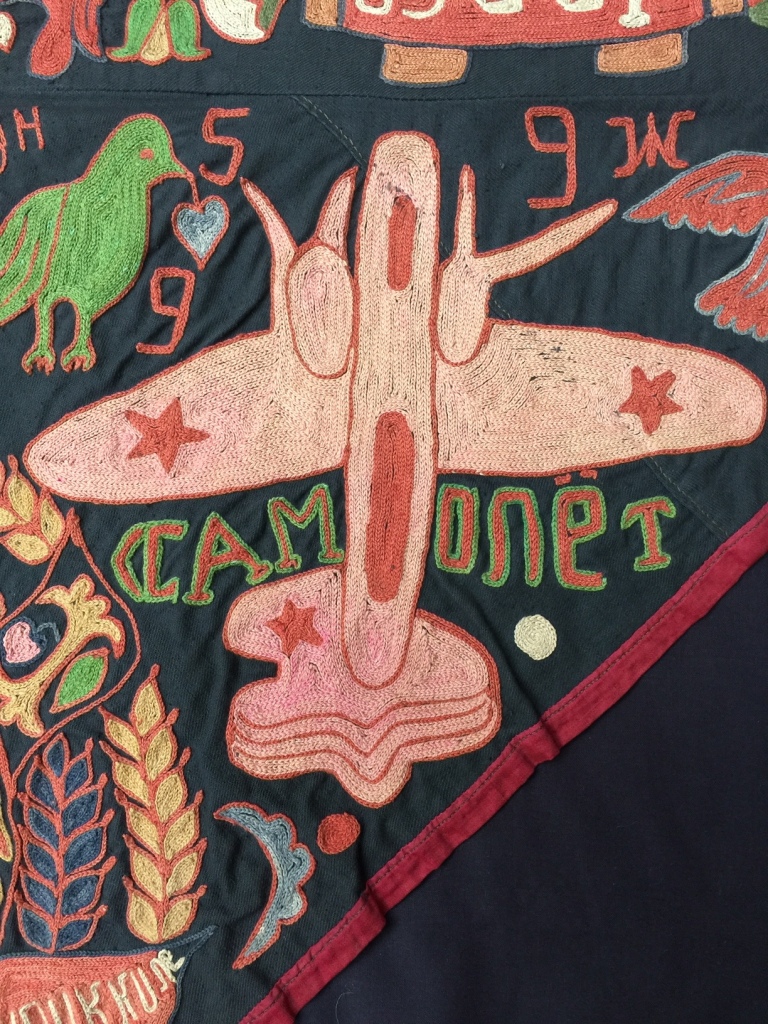
Michele Hardy of the Nickle Galleries in Calgary recently shared this article entitled How Soviet propaganda influenced traditional Oriental carpets. Having seen similar carpets and textiles in Central Asia I found it a fascinating read.

It’s difficult to be certain, but this portrait of Molotov appears to be chain stitch embroidery on broadcloth. The basic structure and outer motifs in the carpet below appear to be quite classical, but just look at the subject of the central lozenge.

The subject of Soviet propaganda was also examined by Irina Bogoslovskaya at the Textile Society of America Symposium in 2012 in her paper The Soviet “Invasion” of Central Asian Applied Arts: How Artisans Incorporated Communist Political Messages and Symbols. I remember being really struck by the some of the motifs Irina showed during her talk, the full text of which can be downloaded here. In it she states that “a powerful way to show the difference between Czarist and Soviet power was through mass-propaganda art” and explains how this applied not just to Socialist Realism in paintings, but also to textiles, carpets and even china.
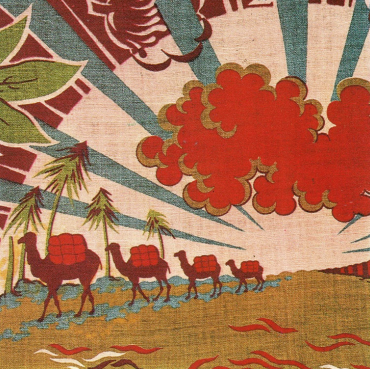
The cotton print above celebrates the Turkestan-Siberia Railroad, juxtaposing the images of the traditional method of transport – camels – with the modern railroad. Another very popular motif was agricultural machinery, as featured on this design by Sergei Burylin in 1925.
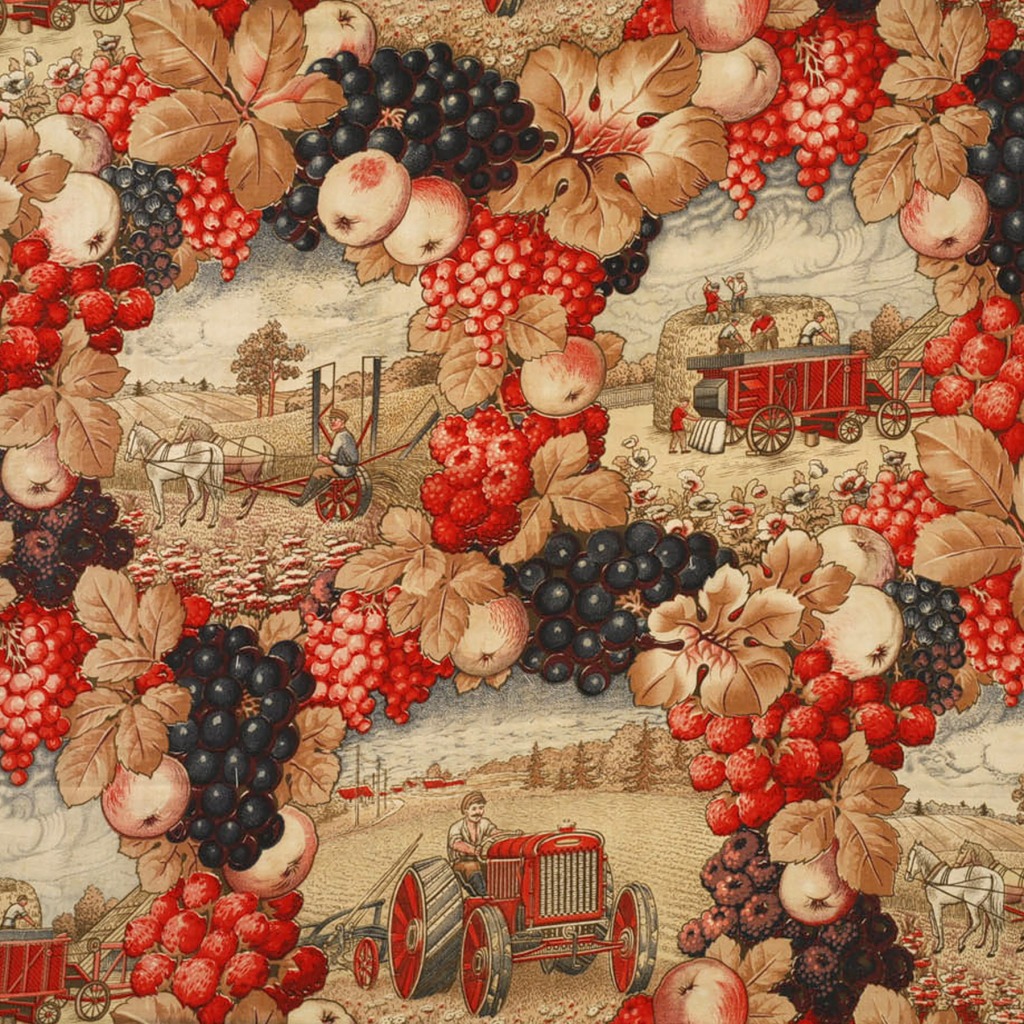
It seems that in the late 19th century the Russian manufacturers were printing textiles designed to appeal to the Central Asian market – generally with floral motifs on a vivid red background. We often see these textiles used as the lining on ikat chapans. The textile below is quite different in that it is clearly imitating an ikat design. This example was exhibited at the World’s Columbian Exposition in Chicago in 1893 and was produced by the factory of Anton Gandurin and Brothers.
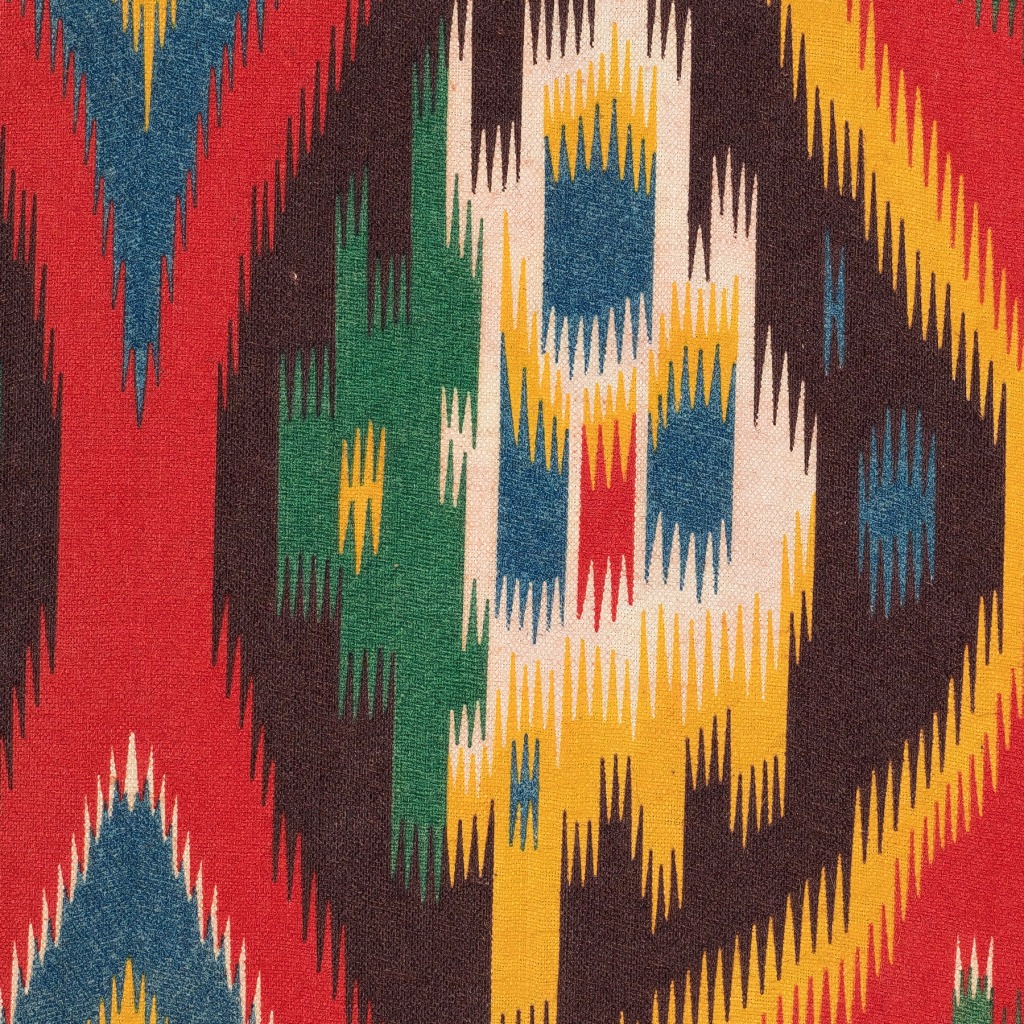
The D. G. Burylin Ivanovo State Museum of Local History has a really wonderful collection of printed textiles which you can access online. Entitled From hand block printing to printing machines: The fabrics collection of the Ivanovo Calico Museum, this showcases textiles from 1710-1931. The textile samples are shown in date order, giving us a great opportunity to see how the designs changed over time. Compare the two images below from 1900 and 1920 to see the sudden change in style.


The earliest textiles in the collection were hand-blocked and the design was achieved using soot and drying oil. We then move on to examples using madder and mordant dyeing, and later to roller printing. There are lots of ways of searching within the collection. I found the section on agitprop textiles in the 1920s fascinating. Many feel very modern and daring in their designs, but some feel like more of a halfway house, incorporating new motifs such as aeroplanes and stars with the familiar floral elements and colour palette.

It’s also interesting to see how some Central Asian people adopted Soviet motifs. In Turkmenistan short neckties were embroidered by women for their husbands to wear to political meetings. Its clear that these were not traditional apparel as the Turkmen use the word galstuk – borrowed from the Russian – to describe them as there was no word for necktie in Turkmen. The embroidery style and the stitches used were typically Turkmen, but the motifs most definitely were not. Many incorporate important dates, the hammer and sickle, red star, or Kremlin clock tower.

Richardson Collection

A tush kiyiz is a wall-hanging intended for the interior of a Kyrgyz yurt. This particular example from the collection of the British Museum is far too large for that purpose and may well have been commissioned for a public building.

©The Trustees of the British Museum.
OATG members David and Sue Richardson have a very similar example in their collection. It was acquired 20 years ago in Bishkek and was said to have been made by an old lady from Novopavlovka. The date 1959 is embroidered on the central triangle. This textile illustrates the bizarre marriage of Soviet thinking and Soviet design with traditional Kyrgyz nomadic folk art. The border has been embroidered using quite thick cotton threads in chain stitch throughout.

The design is a celebration of the Soviet Union, being dominated by circular medallions representing the Soviet Socialist Republics. Most of the medallions conform to a set format, with a rising sun, a hammer and sickle, and some feature of the Republic concerned in the centre, and a frame of the local produce, mainly agricultural, such as wheat, maize, cotton, or trees.
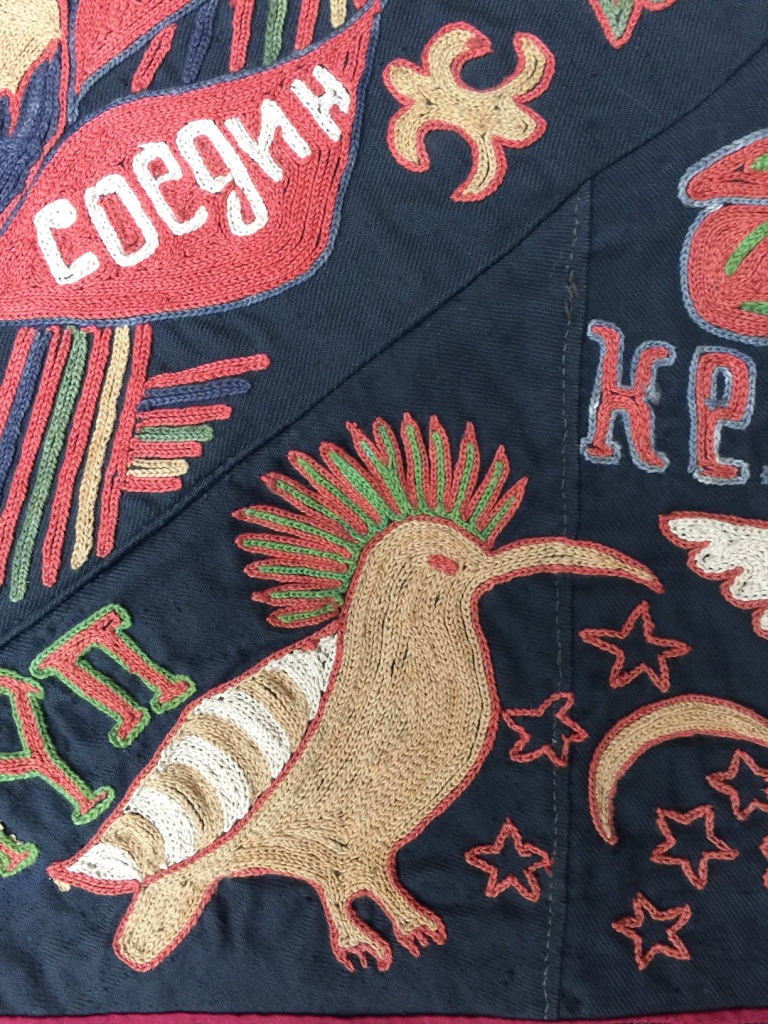
The spaces between these medallions are filled with a variety of wild and domestic animals and birds: a butterfly, a goat, parrot, swan, geese, and cow; a horse, woodpecker and white doves of peace. On the tumar some of the birds, such as the hoopoe and cuckoo, are named and even a Soviet warplane gets in on the act!
